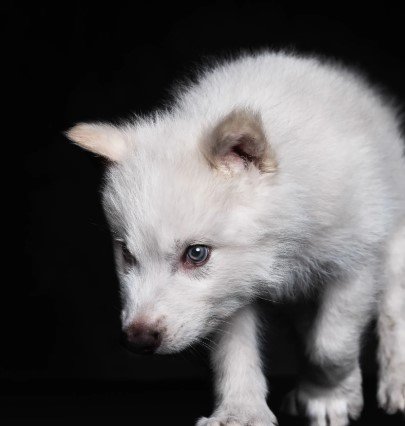Colossal Biosciences, the Texas-based genetic engineering firm best known for working on projects like the woolly mammoth and dodo bird, has officially done what was once pure science fiction: they’ve brought dire wolves back to life.
Romulus, Remus, and Khaleesi: The First of Their Kind in 12,000 Years
In a landmark announcement this week, Colossal confirmed the birth of three healthy dire wolf puppies, reportedly cloned using ancient DNA and CRISPR gene-editing technology. Named Romulus, Remus, and—because of course—Khaleesi, these pups are said to be the first successful de-extinction of a carnivorous species in recorded history.
The dire wolf (Canis dirus), long extinct since the Late Pleistocene epoch, was one of North America’s most fearsome predators—larger, more muscular, and twice as bitey as the modern gray wolf. If you thought dire wolves were just HBO fiction from Game of Thrones, well… meet science.
Enter Jurassic World: “We See No Possible Way This Could Go Wrong”
Naturally, the announcement went viral. And while many celebrated the milestone, one cheeky tweet stole the spotlight: the official Jurassic World X account (formerly Twitter) shared the Time Magazine cover featuring the dire wolves with this delightfully sarcastic remark:
A single sentence. Heavy with irony. Absolutely drenched in cinematic foreshadowing.
You could almost hear Ian Malcolm whispering, “Your scientists were so preoccupied with whether they could, they didn’t stop to think if they should.”

Elon Musk Wants a Pet Dire Wolf—Sort Of
Never one to miss a futuristic moment, Elon Musk jumped into the discussion as well, hinting at interest in miniaturized extinct species as exotic pets. He reposted the Colossal news with a casual:
“Mini dire wolves when?”
Is this science catching up to imagination? Or capitalism catching up to chaos?
Either way, Musk’s tweet sparked a barrage of memes ranging from Black Mirror episodes to Pokemon-style pet battles—proving once again that nothing goes unnoticed on the X-verse.
So, Is This a Good Idea?
Colossal Biosciences, which raised over $225 million in venture funding since its founding, claims its goal is to restore biodiversity and reverse ecological damage caused by human-driven extinctions.
Co-founder Ben Lamm defended the company’s approach:
“The dire wolf’s reintroduction isn’t about spectacle—it’s about unlocking technology that can help endangered species today.”
But not everyone is convinced. Several biologists and conservationists have raised concerns:
-
Habitat Unknown: Where exactly do you release apex predators that haven’t roamed Earth for millennia?
-
Ethical Concerns: Should science be bringing back extinct species just because we can?
-
Regulation Vacuum: There’s little legal precedent for what happens when “de-extincted” animals exist outside labs.
Colossal claims their dire wolves are being kept under high-security research enclosures for study and monitoring. For now.
What’s Next? Woolly Mammoths, Dodos, Saber-Tooths?
If Colossal’s success holds, the dire wolf may be the first domino in a larger resurrection project. The company previously said it hopes to reintroduce woolly mammoths by 2028, and dodos shortly after.
They’re also working with wildlife preserves in Australia, Africa, and Siberia to prepare for future “rewilding.”
Whether this leads to conservation breakthroughs or dystopian disaster is still an open question.
